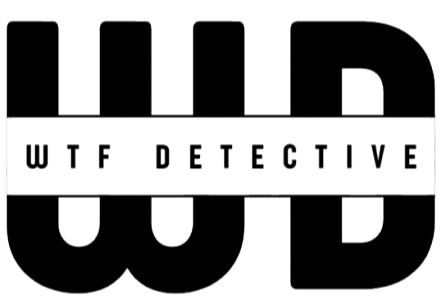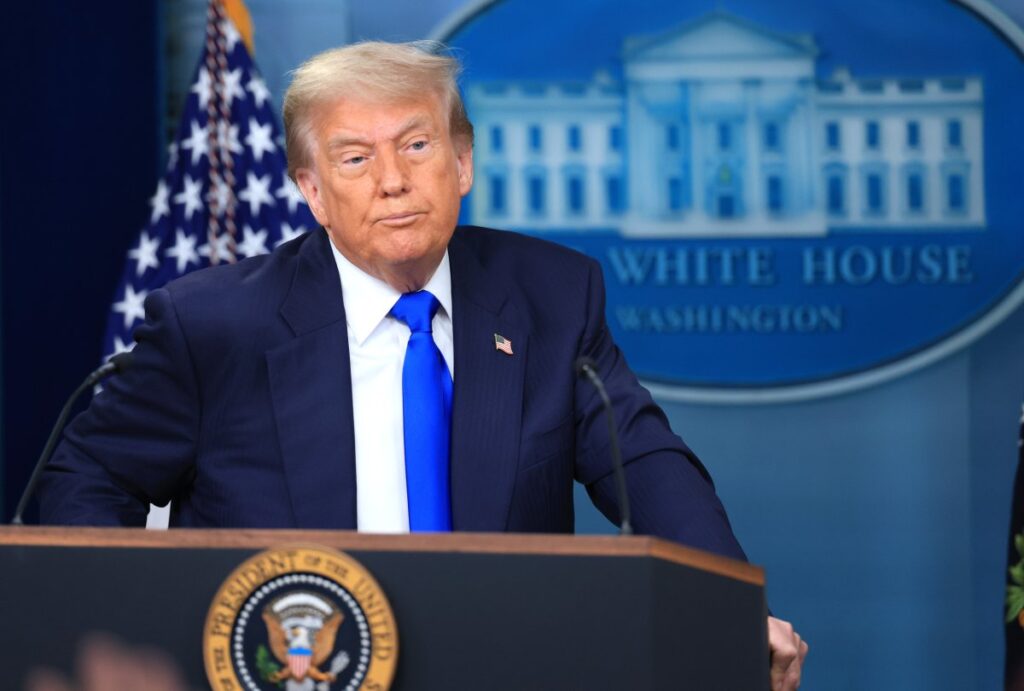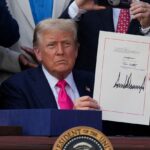Less than six months into his second term, President Donald Trump’s administration has dealt a serious blow to both the U.S. and global economy. From dispatching aggressive, often-masked ICE agents to targeting immigrants — both undocumented and legal — to impulsively firing civil servants and threatening sweeping tariffs, Trump has injected profound uncertainty across industries, undermining both consumer confidence and business stability.
It’s easy to forget Trump began this term with a strong economic hand. At the close of 2024, the Federal Reserve projected healthy growth at 2.1% and inflation falling to 2.5% in 2025. Just three months later, those numbers were revised downward to 1.7% growth and 2.7% inflation. Institutions from the IMF to the Conference Board now forecast further weakening, with U.S. growth sliding to between 1.4% and 2% and global growth dropping from 3.3% in 2024 to just 2.3% in 2025.
While Trump’s erratic policy moves and executive orders often dominate headlines, a quieter but equally destructive shift is unfolding: a collapse of global trust in the U.S. This erosion of confidence has already contributed to a 10% decline in the dollar’s value against both the euro and the Swiss franc. Despite a modest recovery in stock markets following delays on the harshest “Liberation Day” tariffs, the dollar remains soft and Treasury yields are climbing.
The “One Big Beautiful Bill Act” (OBBBA), if passed, is expected to add at least $3 trillion to federal debt by 2034. Markets are responding accordingly, with bond yields on 10- and 30-year debt already rising — a sign of increasing alarm from investors.
On the domestic front, Trump’s relentless anti-immigrant agenda adds another layer of economic risk. Tourism is falling sharply, with Canadian visits down nearly 40% year-over-year. Immigrants are the backbone of sectors like hospitality and agriculture — comprising nearly 75% of the farm workforce. Despite briefly proposing limited visa relief for these industries, Trump quickly reversed course after internal backlash, underscoring the administration’s deep disarray.
Economists warn that cutting off labor supply through immigration crackdowns will depress growth, limit innovation, and drive up costs. Skilled workers are already becoming harder to find, and industries from tech to healthcare are bracing for long-term strain.
At a macro level, economic growth depends on two factors: labor force size and productivity. Trump’s immigration policies hinder both, which will only push the U.S.’s already-high debt-to-GDP ratio higher — especially under the OBBBA’s budget assumptions.
Simultaneously, the administration’s sweeping cuts to science funding could decimate productivity gains for years to come. The U.S. has historically led the world in innovation due to strong public investment in R&D. Returns on this investment are enormous — some estimates range from 30% to over 100%. Government-funded research has been key to one-quarter of all post-WWII business productivity growth, according to the Dallas Fed.
Thousands of scientists have already lost their jobs, with federal grants to major universities canceled or frozen. If OBBBA passes in full, grant funding from agencies like the NIH, NSF, EPA, and CDC will be slashed by 44% to 55%. That scale of reduction threatens research institutions that train the next generation of scientists and power America’s tech infrastructure.
With the rise of AI and climate crisis looming, the timing couldn’t be worse. The U.S. has long been the top destination for foreign-born researchers, many of whom stay to contribute to academia or launch startups. One recent study attributes roughly 36% of U.S. innovation to immigrant talent. But under Trump’s administration, increasingly restrictive visa policies and ideological vetting are deterring them.
The past six months have been marked by an unprecedented unraveling. Project 2025, the agenda crafted by the Heritage Foundation and adopted by Trump, spells out a full transformation of American institutions — one already in motion. While economic costs rise, the administration continues to centralize power and deploy military force domestically, echoing authoritarian playbooks.
Polls show Trump slipping nationally, particularly on issues like healthcare and the economy, although his numbers remain mixed on immigration. The danger, however, lies in legislative success: the OBBBA remains likely to pass.
Its impact would be catastrophic: shifting wealth to the top, cutting off food aid to over four million people, stripping 17 million of health insurance, and adding trillions to national debt. Rising risk premiums will hike borrowing costs across the board — from government securities to mortgages.
Trump inherited a solid economy. He’s now on track to break it.
Note: This article is informed by reputable sources, including CBS News and Forbes on the proposed “Big Beautiful Bill” and public sentiment; it also references detailed analysis from the Center on Budget and Policy Priorities and polling data from Pew Research and NBC News to ensure accuracy and transparency.



